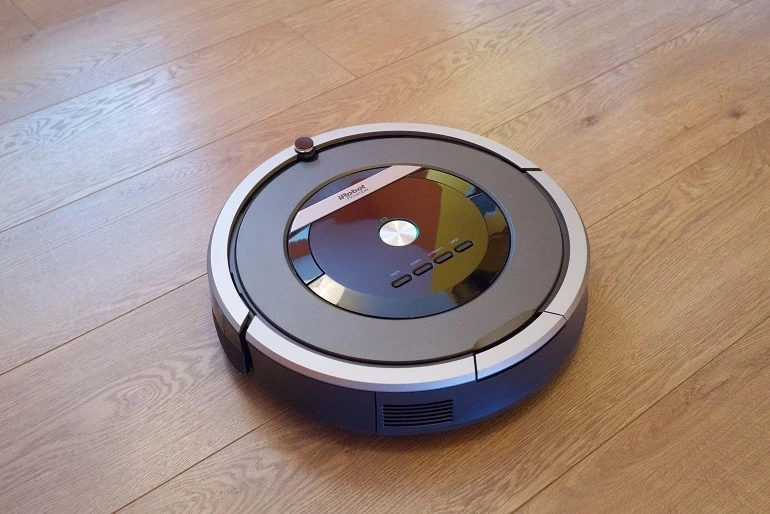In today's fast-paced world, finding time to keep our living spaces clean and tidy can be a challenge. Thankfully, the rise of automated cleaning solutions has provided us with convenient options, such as Roombas, the popular robotic vacuum cleaners. These compact and intelligent devices have gained widespread popularity due to their ability to autonomously navigate and clean our homes. However, when it comes to small spaces, it is essential to consider the specific pros and cons of using Roombas for automated cleaning.
In this article, we explore the pros and cons of using Roombas in small areas, helping you make an informed decision about integrating these devices into your compact living spaces.
Pros of Using Roombas in Small Spaces:
1. Time-saving Convenience:
Roombas excel in their ability to automate the cleaning process. In small spaces, where maneuvering a traditional vacuum cleaner can be challenging, Roombas effortlessly navigate tight corners, under furniture, and around obstacles. They can clean even when you're not at home, ensuring that your small space remains tidy without requiring your constant attention.
2. Efficient Cleaning:
Roombas employ intelligent algorithms and sensors to map and clean the area effectively. They are designed to adapt to different floor types and can handle a variety of surfaces, including carpets, hardwood floors, and tiles. The compact size of Roombas allows them to access hard-to-reach areas, ensuring a thorough cleaning in small spaces.
3. Space Optimization:
In small living spaces, storage can be a concern. Roombas offer a space-saving solution as they can be easily stored in a closet or under furniture when not in use. Their compact design and docking stations take up minimal space, allowing you to make the most of your limited square footage.
4. Low Maintenance:
Roombas require minimal maintenance compared to traditional vacuum cleaners. They come with self-emptying bins (in some models) that reduce the frequency of emptying the dust container. Regular maintenance tasks, such as cleaning brushes and filters, are simple and hassle-free, saving you time and effort in maintaining a clean living environment.
5. Allergen Reduction:
Roombas equipped with HEPA filters can help reduce allergens in the air, making them beneficial for individuals with allergies or respiratory conditions. They can effectively trap dust, pet dander, and other airborne particles, contributing to improved indoor air quality.
6. Improved Accessibility:
Roombas are particularly useful for individuals with mobility issues or physical limitations. They can effortlessly clean hard-to-reach areas, such as under beds or furniture, without the need for bending or moving heavy objects.
7. Easy Maintenance:
Roombas are designed with user-friendly maintenance in mind. Emptying the dustbin, cleaning brushes, and replacing filters are straightforward tasks that require minimal effort.
Cons of Using Roombas in Small Spaces:
1. Limited Cleaning Capacity:
While Roombas perform well in small spaces, their cleaning capacity may be limited compared to larger vacuum cleaners. The dustbin size of Roombas is typically smaller, requiring more frequent emptying, which can be a disadvantage in spaces prone to accumulating dust and debris quickly.
2. Staircase Navigation:
Most Roombas lack the ability to navigate stairs. If your small space has multiple levels or stairs, you may need to manually transport the Roomba between floors, limiting its convenience and automated cleaning capabilities.
3. Initial Cost:
Roombas can be more expensive than traditional vacuum cleaners, especially models equipped with advanced features and technologies. The initial investment may pose a challenge for those on a tight budget, especially considering the limited floor space in small living areas.
4. Potential Navigation Challenges:
In some cases, Roombas may encounter difficulties navigating cluttered spaces or complex layouts with many furniture pieces or obstacles. The presence of cords, rugs with high edges, or uneven surfaces may impact their cleaning efficiency, requiring occasional manual intervention to ensure thorough cleaning.
5. Noise Level:
Roombas can generate noise while operating, which may be more noticeable in small living spaces. Although their noise levels have improved over time, it's essential to consider the noise factor if you are sensitive to sound or require a quiet environment.
6. Lack of Manual Control:
Unlike traditional vacuum cleaners, Roombas lack the option for manual control. While they navigate autonomously, there may be times when you prefer to manually target specific areas or address immediate cleaning needs.
7. Battery Life Limitations:
Roombas typically have a limited battery life, especially older models. In small spaces, where the cleaning area is relatively small, this may not pose a significant issue. However, if you have a larger small space or require longer cleaning sessions, you may need to consider models with extended battery life or the ability to resume cleaning after recharging.
8. Maintenance Requirements:
While Roombas have simplified maintenance compared to traditional vacuum cleaners, they still require regular upkeep. Cleaning the brushes, filters, and sensors, as well as occasional troubleshooting, are essential to ensure optimal performance.
Conclusion:
Roombas offer several advantages for cleaning small spaces, including time-saving convenience, efficient cleaning performance, space optimization, and low maintenance. However, it's important to consider the limitations, such as limited cleaning capacity, staircase navigation challenges, initial cost, and potential navigation difficulties in cluttered spaces.
Evaluating these pros and cons will help you determine whether Roombas are a suitable option for maintaining cleanliness in your small living area. Ultimately, the decision should be based on your specific needs, budget, and willingness to embrace automated cleaning technology.


